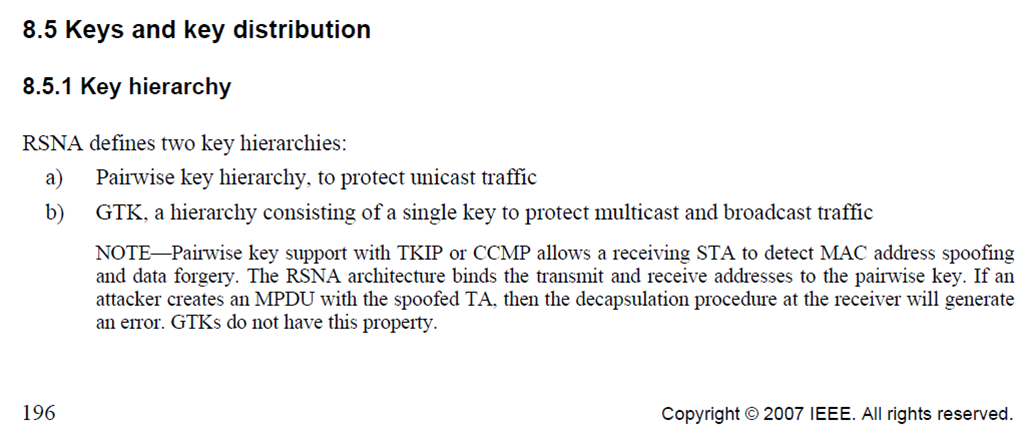Last week at BlackHat, AirTight Networks security analyst Md Sohail Ahmad presented his findings on a vulnerability dubbed “hole196”. Affecting WPA/WPA2 Enterprise networks, this issue allows an authenticated user to manipulate other clients on the network to establish ARP spoofing attacks, to impersonate data frames from the AP or to create a DoS attack against other users. This is all through leveraging a key shared among all of the authorized clients in a wireless LAN known as the Group Temporal Key (GTK). The “hole196” bit refers to page 196 of the IEEE 802.11-2007 specification indicating that the GTK does not prevent packet forgery attacks (from an insider).

The BlackHat presentation slides were distributed on the BlackHat conference CD, and since the slides lack any kind of a copyright notice, I think it’s OK for me to mirror them here.
Initially, this flaw had some people concerned, since an early article published by Network World and Joanie Wexler indicated:
Clients who receive the message see the client as the gateway and “respond with PTKs”, which are private and which the insider can decrypt, Ahmad explains.
If this attack could get a client to reveal their PTK, even requiring that the attack start from an insider perspective, then I’d be coding up an exploit tool instead of writing this post. This, however, appears to be a misquote by Wexler, or a misunderstanding by Ahmad. No-one has clarified this quote as far as I have seen.
The truth behind this issue is that, well, it’s a non-issue for most organizations. Instead of mounting an ARP spoofing attack to implement a man-in-the-middle (which a wired IDS could detect), it can be done using this technique within the encrypted wireless network, evading network IDS detection. The best way to detect this attack is through a wireless IDS, of which AirTight is a leading vendor (“Yay, Capitalism!”).
When significant wireless attacks emerge, I call my customers to remind them that I do get let out of my cave every now and then, and to help them understand their exposure to the attack. I don’t believe “hole196” falls into the category of significant wireless attack, so it’s back to the cave I go.
For a 2nd perspective, and an excellent technical write-up, please see Glenn Fleishman’s article over at Ars Technica. In the meantime, contact me with any questions/concerns/comments.
-Josh